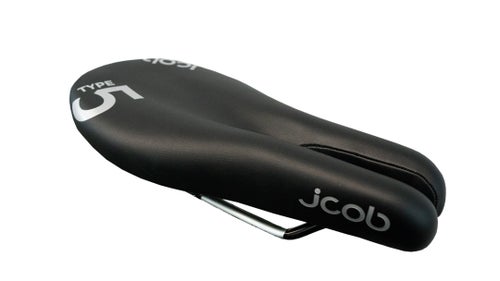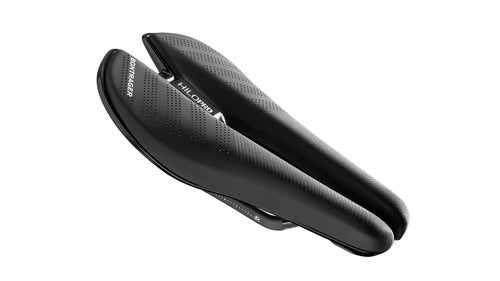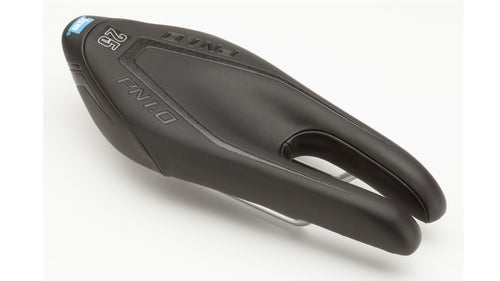[ad_1]
“], “filter”: { “nextExceptions”: “img, blockquote, div”, “nextContainsExceptions”: “img, blockquote”} }”>
For access to all of our training, gear, and race coverage, plus exclusive training plans, FinisherPix photos, event discounts, and GPS apps,
>”,”name”:”in-content-cta”,”type”:”link”}}”>sign up for Outside+.
If you even clicked on this story, the obvious answer might be, “Yes, you need a new saddle.” But there’s more than one reason to get a new saddle, and it’s not always for the reasons you think. Whether you need a new saddle right now, you needed one weeks (or months) ago, or you think you might need a new one in the next few months, now is definitely the time to look into it. If you’re like many weather-disadvantaged triathletes, you’re probably still riding indoors on your trainer, and every triathlete with a rear end knows that even slight saddle issues get amplified to 11 when riding inside. On that same note, if you can find a saddle that works inside, there’s a very good chance it’ll work well outside as well—if not better. And if you’re lucky enough to not be jammed into an indoor pain cave, the early season is exactly the best time to try some new saddles before you get into the thick of the race season. So if you’re asking, “Do I need a new saddle?” and the answer is yes, then on for what to look for, what a new saddle can mean for you, and a handful of our recommendations. Don’t wait.
RELATED: The Best Triathlon Saddles Last Year
When Should I Get A New Saddle?
Like I mentioned in the last section, the early spring season is the best time to get a new saddle, and it’s not for the reasons you might expect. While the buffer between the spring and the summer tri season is a good enough reason—you don’t want to change anything as you get close to race day, of course—there’s more to it than simply getting used to a new saddle. For one, a new saddle, unless it’s literally the exact same make and model, can have implications on your fit—for better or for worse. Many saddles, like the Speed and Comfort Type 5 we highlight below, have a taller height from rail to seat surface, so you’ll need to lower your seat. Other saddles are soft, and allow for a ton of compression, so if you put your new seat in the exact same position as your old, pre-compressed saddle, you could easily find yourself sitting way too low, and you’ll need to actually raise your saddle height upward. Similarly, you may find yourself riding more forward or backward on a differently shaped saddle, so you may need to adjust your fore-aft position to prevent upper and/or lower back issues. So start working on that now—not in a few months.
Why Do I Need A New Saddle?
There are the obvious reasons: the cover is showing holes or it’s been worn smooth and you slide around on it after getting out of the water. Or it could simply be hurting your underparts in a way it didn’t used to—this could be due to the filler material compressing fully to the rails or seams. Sometimes this feels like general soreness, but other times it can cause chafing in new and unusual spots as the saddle widens out after hundreds of miles of use. There are also the less-obvious reasons, like your back hurts and you can’t figure out why, or your shoulders feel tight and you can’t seem to adjust your aerobars enough to make the pain disappear. In these cases, a different type of saddle could be the solution. It can take a long time to find a saddle that fits your body’s shape, and sometimes you might even need a new saddle shape with a plethora of seating positions to relieve upper-body pain. There are other times when you (or your fitter) find that you need a saddle with extra-long rails to provide enough adjustment space to accommodate your position—like the aforementioned Speed and Comfort Type 5, for instance. (And don’t forget, positions often change as we age!)
How Do I Shop For A New Saddle?
This is important. Shopping for a new saddle is nothing like shopping for a pair of wheels or even like shopping for a new bike. Plenty of adjustments can be made to the fit of a new bike—assuming you have the right size—but you can’t adjust anything on a saddle in terms of its shape and how you sit on it. Sure you can adjust saddle tilt, height, and fore-aft, but it takes time to know if a saddle works for you, and while a good saddle is worth its weight in gold, a bad saddle isn’t worth anything at all. Worse yet, it’s incredibly difficult to know if a saddle is right for you until you put it on your bike and try it. While we have an exhaustive buyer’s guide on our site and a few recommendations below, the measurements and suggestions are simply to help you begin your search. The best way to shop for a new saddle is to find a brand or shop that lets you actually test drive it on a few rides and bring it back if it doesn’t work for you. At the very least, you want to be able to sit on it in the store. Your local fitter is a fantastic resource because he or she will have more experience than anyone with saddles, their issues, and their successes. The good news is that you can use our measurements and recommendations to help guide you from what you have (and maybe don’t like) to something that will at least work better. Will it be the perfect saddle? That’s for you and your butt to decide.
What Should I Be Looking For?
Most obviously, your new saddle needs to be comfortable—and this is important—in the position you’ll be in for the majority of your racing. A saddle can feel good when you’re riding in the basebars or spinning easy in the aerobars, but you should try any potential saddles at your goal distance race pace for some time. For many, as you push into the pedals and put out near race-pace power, your position changes—some roll forward on their saddle, for instance. Some people like to move around to prevent upper or lower body stress, so those people will want a saddle with more real estate to change positions. Some people actually like a slicker saddle to prevent chafing, while others may angle their saddle slightly up or down to accommodate a specific position, and a tacky saddle cover is essential to prevent sliding forward or backwards and creating a whole host of issues.
Width is also important, as a rider with a wider pelvis structure may want a wider saddle with more support; a rider with a narrower pelvis structure might find that same wide saddle a huge hindrance than could cause unnecessary chafing. And while many people like a softer-feeling saddle at first, a super soft saddle can actually lose its structure on long rides and compress onto the rails or the hard plastic or carbon body of the saddle itself. So for saddles, softer is not always better—particularly the more you ride.
Here are a few quick recommendations from Jonathan Blyer, expert fitter and owner of Brooklyn-based ACME Bicycle Co. Also be sure to check out our saddle buyer’s guide for more models and a deeper look into more measurements:
Speed And Comfort Type 5
$250, 366g, speedandcomfort.com

Speed and Comfort might be better known as the brainchild of saddle pioneer John Cobb, and with their Type 5, S&C has fallen back on what they know best. With a long, split-nose design, the narrow front end is a good choice for those who have bad experiences with wider split-nose designs. This is a particularly good choice for female riders, as the wider, flatter back end of the seat fits many women’s pelvic structures.
Bontrager Hilo Pro
$240, 236g, trekbikes.com

This is another classic design from Trek-owned Bontrager. The Hilo Pro is an example of a softer saddle for those who desire a little more cushion that won’t compact down quickly. Unlike a few other soft saddles with a pressure relief channel, the channel on the Hilo doesn’t compact and reduce under the load of a rider’s body.
ISM PN1.0
$250, 316g, ismseat.com

Though ISM has become common stock equipment on many triathlon bikes today, there’s a reason: This is a saddle that works well for many riders who sit in the tri position. A stark contrast to the Hilo Pro above, the PN1.0 is definitely firmer, but it also boasts longer saddle rails for more options when it comes to fitting.
[ad_2]
Source link
